Conversation with Thom Kinzel (thomkinzel) - A printmaker's revolution of colours
In black-and-white and recently also in bright colours, the characteristic figures and restricted sceneries of Thom's works are well known to every visitor of FuturMaestri. He is otherwise keen on presenting his artwork to the public at every possible occasion because he knows well that they reveal their true nature when viewed from face to face. The past few years and especially the last months were quite eventful for Thom who besides participating at several contests and exhibitions - also that of FuturMaestri - started to teach at the university, too.
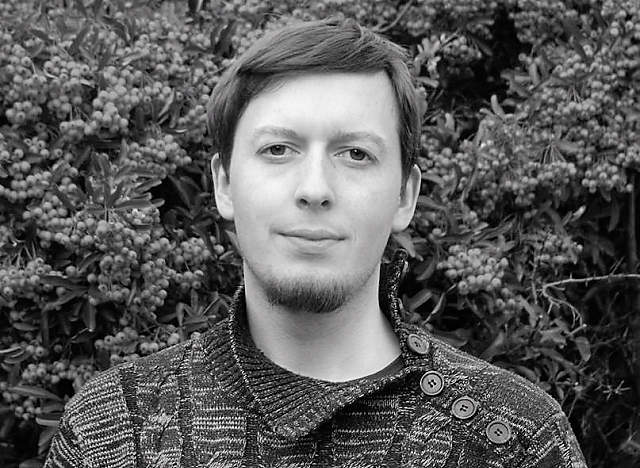
![]() custos
Would you tell us about the time when you were a child and then a teenager - how you have begun to create things?
custos
Would you tell us about the time when you were a child and then a teenager - how you have begun to create things?
![]() thomkinzel
As a child I loved to draw. I always had a pencil in my hand or tried to paint with watercolours. Well, this was for sure not my only hobby, but maybe the one I remember most. I was also a member at the local water rescue department and also did archery. In my teenage years I didn’t draw anymore. To be honest I do not know why. I just stopped it when I was about ten or eleven. From this time on music was more important for me. I learned to play the guitar and played in bands. At the age of about 14 I heard Apocalyptica for the first time and fell in love with cello music. I started to learn to play cello and later on also the piano. At this point of my life I wanted to study music after finishing secondary school.
But it didn’t come this way. I got problems with my shoulder and wasn’t able to practice for hours every day anymore. At this time I learned to know my girlfriend, who now is my wife. She had acrylic paints at home, which I didn’t know before. I tried to use it, but I did not like it. Anyway, my interest for painting and drawing was awake again. After I recognized that I and acrylics is not a good combination I tried oils, which I still use now. For my last two years at secondary school I chose art and English as my major subjects. Actually, this was the beginning of everything.
thomkinzel
As a child I loved to draw. I always had a pencil in my hand or tried to paint with watercolours. Well, this was for sure not my only hobby, but maybe the one I remember most. I was also a member at the local water rescue department and also did archery. In my teenage years I didn’t draw anymore. To be honest I do not know why. I just stopped it when I was about ten or eleven. From this time on music was more important for me. I learned to play the guitar and played in bands. At the age of about 14 I heard Apocalyptica for the first time and fell in love with cello music. I started to learn to play cello and later on also the piano. At this point of my life I wanted to study music after finishing secondary school.
But it didn’t come this way. I got problems with my shoulder and wasn’t able to practice for hours every day anymore. At this time I learned to know my girlfriend, who now is my wife. She had acrylic paints at home, which I didn’t know before. I tried to use it, but I did not like it. Anyway, my interest for painting and drawing was awake again. After I recognized that I and acrylics is not a good combination I tried oils, which I still use now. For my last two years at secondary school I chose art and English as my major subjects. Actually, this was the beginning of everything.
![]() custos
Were you daydreaming about your future profession when you were a kid?
custos
Were you daydreaming about your future profession when you were a kid?
![]() thomkinzel
As a kid I still know that I wanted to be an archaeologist for a long time. The father of a good friend works as archaeologist close to my hometown and sometimes we were allowed to come with him. I think this was the reason why I was so fascinated of this job. As I had to choose what to do after secondary school this idea came up to me again. But due to the influence of my major subject art I thought about studying art history. As I visited the University of Eichstätt for the first time I met the professor for art education, Prof. Köppel. When I think back at this day I think this was the moment where I switched my mind and wanted to become art educator. The only way to study art pedagogy at Eichstätt University was to study for teaching. So I chose English and art as my two main subjects.
Nonetheless, even before this I took part at several small group exhibitions. In my home-district we have the annual event “Youth Culture Days” in which young people can show their talent in music, art, dance, etc. It is not like a competition but you get the chance to present yourself or what you are doing. This is where I had my first exhibitions. Later on I had even more exhibitions and got contact the local art club “Isargilde”. In 2010 I got full membership. At this point the idea of a career as a freelance artist came up to my mind for the first time. Since 2012 I’m mainly working as an artist, my studies went more and more into the background. Parallel to this development I got the chance to teach at university for the first time in 2013, as a tutor for intaglio techniques.
thomkinzel
As a kid I still know that I wanted to be an archaeologist for a long time. The father of a good friend works as archaeologist close to my hometown and sometimes we were allowed to come with him. I think this was the reason why I was so fascinated of this job. As I had to choose what to do after secondary school this idea came up to me again. But due to the influence of my major subject art I thought about studying art history. As I visited the University of Eichstätt for the first time I met the professor for art education, Prof. Köppel. When I think back at this day I think this was the moment where I switched my mind and wanted to become art educator. The only way to study art pedagogy at Eichstätt University was to study for teaching. So I chose English and art as my two main subjects.
Nonetheless, even before this I took part at several small group exhibitions. In my home-district we have the annual event “Youth Culture Days” in which young people can show their talent in music, art, dance, etc. It is not like a competition but you get the chance to present yourself or what you are doing. This is where I had my first exhibitions. Later on I had even more exhibitions and got contact the local art club “Isargilde”. In 2010 I got full membership. At this point the idea of a career as a freelance artist came up to my mind for the first time. Since 2012 I’m mainly working as an artist, my studies went more and more into the background. Parallel to this development I got the chance to teach at university for the first time in 2013, as a tutor for intaglio techniques.
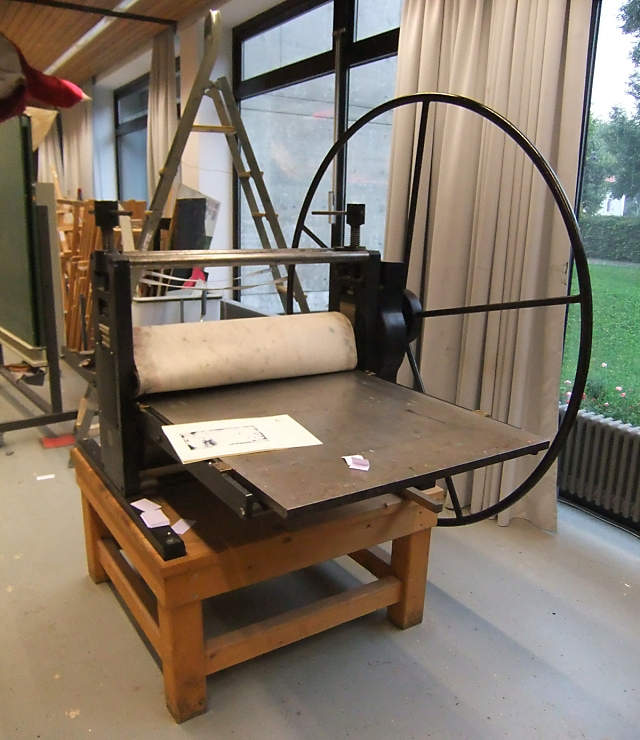
![]() custos
Have you left your hometown for your studies? Why did you choose Eichstätt?
custos
Have you left your hometown for your studies? Why did you choose Eichstätt?
![]() thomkinzel
I actually left Landau/Isar, my hometown, for studying at Eichstätt University. I first moved to Ingolstadt, only a few kilometers away from Eichstätt, because my wife made her apprenticeship there. After she had finished it we moved to Eichstätt, where we still live now.
Well, I chose Eichstätt to study at, because the university is very small. Especially in art classes this is an enormous advantage. We usually don’t have more than 15 students in a course. And when no classes take place the art rooms can be used privately by the students to practice or try new things.
And there also was another reason. As student in secondary school my former teacher gave me some lithostones, because he thought this technique would fit to me. The area around Eichstätt is the origin of lithography. In 1796 Alois Senefelder discovered this technique. Unfortunately I did not know that no one was there to teach it. Nonetheless I soon started to feel at home in Eichstätt, although I still lived in Ingolstadt.
thomkinzel
I actually left Landau/Isar, my hometown, for studying at Eichstätt University. I first moved to Ingolstadt, only a few kilometers away from Eichstätt, because my wife made her apprenticeship there. After she had finished it we moved to Eichstätt, where we still live now.
Well, I chose Eichstätt to study at, because the university is very small. Especially in art classes this is an enormous advantage. We usually don’t have more than 15 students in a course. And when no classes take place the art rooms can be used privately by the students to practice or try new things.
And there also was another reason. As student in secondary school my former teacher gave me some lithostones, because he thought this technique would fit to me. The area around Eichstätt is the origin of lithography. In 1796 Alois Senefelder discovered this technique. Unfortunately I did not know that no one was there to teach it. Nonetheless I soon started to feel at home in Eichstätt, although I still lived in Ingolstadt.
![]() custos
What were your studies like?
custos
What were your studies like?
![]() thomkinzel
To be honest my studies were some hard work. In 2009 I started to study American studies, English studies and art for teaching at German secondary schools. In 2012 I started to work as a freelance artist. In 2013I made my Bachelor of Arts and in 2014 I made my state exam. During this time I learned a lot new things about literature, different cultures and of course art. Because I’ve already been interested in printmaking before starting my studies, I also focused on it at university classes. Especially intaglio was my favorite field of work.
Besides the studies at university I also wanted to learn more about techniques no one could teach me there. So I visited different artists, talked with them about their way of work and which techniques they use. One of my most important encounters was with the artist Günther Filus, a lithograph, who lived not far away from my hometown. He taught me the basic background of lithography. However I didn’t have a litho-press so I did not work with this technique anymore until 2013, when I started to use thin litho-stones and print them manually. Meanwhile Eichstätt University got a litho-press and a lot of good quality stones. Therefore I started to teach this technique since this year’s summer term.
thomkinzel
To be honest my studies were some hard work. In 2009 I started to study American studies, English studies and art for teaching at German secondary schools. In 2012 I started to work as a freelance artist. In 2013I made my Bachelor of Arts and in 2014 I made my state exam. During this time I learned a lot new things about literature, different cultures and of course art. Because I’ve already been interested in printmaking before starting my studies, I also focused on it at university classes. Especially intaglio was my favorite field of work.
Besides the studies at university I also wanted to learn more about techniques no one could teach me there. So I visited different artists, talked with them about their way of work and which techniques they use. One of my most important encounters was with the artist Günther Filus, a lithograph, who lived not far away from my hometown. He taught me the basic background of lithography. However I didn’t have a litho-press so I did not work with this technique anymore until 2013, when I started to use thin litho-stones and print them manually. Meanwhile Eichstätt University got a litho-press and a lot of good quality stones. Therefore I started to teach this technique since this year’s summer term.
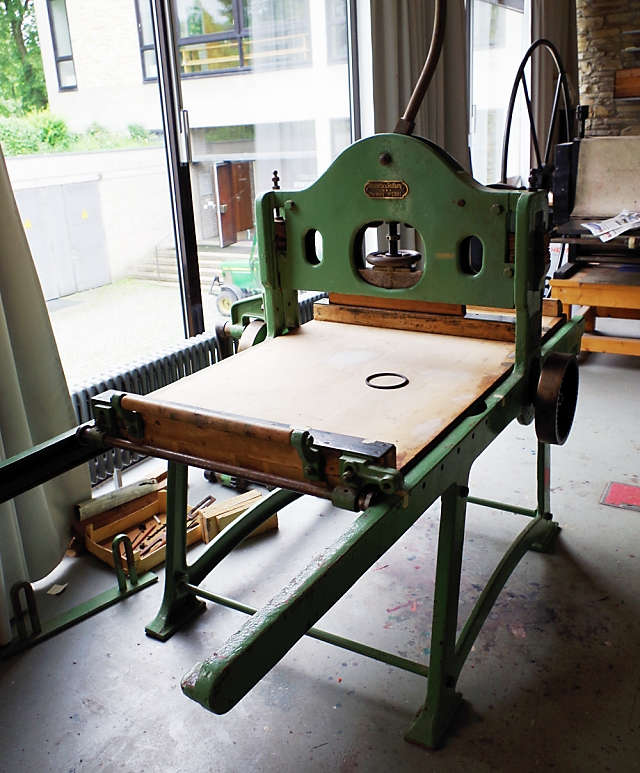
![]() custos
Are you still active in museum education?
custos
Are you still active in museum education?
![]() thomkinzel
I’m officially still working at the Museum for Concrete Art in Ingolstadt, Germany. But due to my final exams at university and quite a lot of exhibitions I haven’t been very active in the last months. But I’m planning to be there more regularly again in the next time. However it is becoming more and more difficult to find free slots in my timetable to work there, because since I have finished my studies now I started to work as university instructor for printmaking, painting and drawing. These jobs are quite a good combination, because I can work with children (at the museum) and with young people (at the university) and both in the art-context.
The work there is really interesting. By presenting the artworks to children and juveniles oneself learns much more about the artists, their ideas and the artwork itself than by only looking at them. And of course some questions you are asked as museum educator or art pedagogue are absolutely priceless.
thomkinzel
I’m officially still working at the Museum for Concrete Art in Ingolstadt, Germany. But due to my final exams at university and quite a lot of exhibitions I haven’t been very active in the last months. But I’m planning to be there more regularly again in the next time. However it is becoming more and more difficult to find free slots in my timetable to work there, because since I have finished my studies now I started to work as university instructor for printmaking, painting and drawing. These jobs are quite a good combination, because I can work with children (at the museum) and with young people (at the university) and both in the art-context.
The work there is really interesting. By presenting the artworks to children and juveniles oneself learns much more about the artists, their ideas and the artwork itself than by only looking at them. And of course some questions you are asked as museum educator or art pedagogue are absolutely priceless.
![]() custos
You’ve participated in quite a few exhibitions, competitions and other events, especially this year. Which are the most important for you of these?
custos
You’ve participated in quite a few exhibitions, competitions and other events, especially this year. Which are the most important for you of these?
![]() thomkinzel
At the beginning of this year I had my most important exhibition so far. I won the Sparda-Bank Art Award of the city Amberg, which was connected with an individual exhibition in the city’s gallery Alte Feuerwache, a 170 square meter room in the museum of Amberg. I never had so much space for my paintings before; on the other hand it was a big challenge as well. In about six months I created lots of new paintings and prints to fill all these white walls. Every piece I showed there was connected with the topic “home”. Additionally it was the first exhibition where I showed some of my lithographies and even a three dimensional piece.
Quite at the same time I also got the Youth-Culture-Prize of my home-district. Every year one person at the age from 1 to 25 gets this honor as appreciation for his or her cultural commitment.
Another important exhibition was, let’s say, directly at the very beginning of my “career”. In 2009 I was selected to show four of my artworks at an exhibition in Schönsee, very close to the borderline to Czech-Republic. The whole exhibition was intended to show young art from Bavaria and Czech-Republic. Of course there are a lot more events that would be worth talking about, but I think this would be a little too much of a good thing.
thomkinzel
At the beginning of this year I had my most important exhibition so far. I won the Sparda-Bank Art Award of the city Amberg, which was connected with an individual exhibition in the city’s gallery Alte Feuerwache, a 170 square meter room in the museum of Amberg. I never had so much space for my paintings before; on the other hand it was a big challenge as well. In about six months I created lots of new paintings and prints to fill all these white walls. Every piece I showed there was connected with the topic “home”. Additionally it was the first exhibition where I showed some of my lithographies and even a three dimensional piece.
Quite at the same time I also got the Youth-Culture-Prize of my home-district. Every year one person at the age from 1 to 25 gets this honor as appreciation for his or her cultural commitment.
Another important exhibition was, let’s say, directly at the very beginning of my “career”. In 2009 I was selected to show four of my artworks at an exhibition in Schönsee, very close to the borderline to Czech-Republic. The whole exhibition was intended to show young art from Bavaria and Czech-Republic. Of course there are a lot more events that would be worth talking about, but I think this would be a little too much of a good thing.
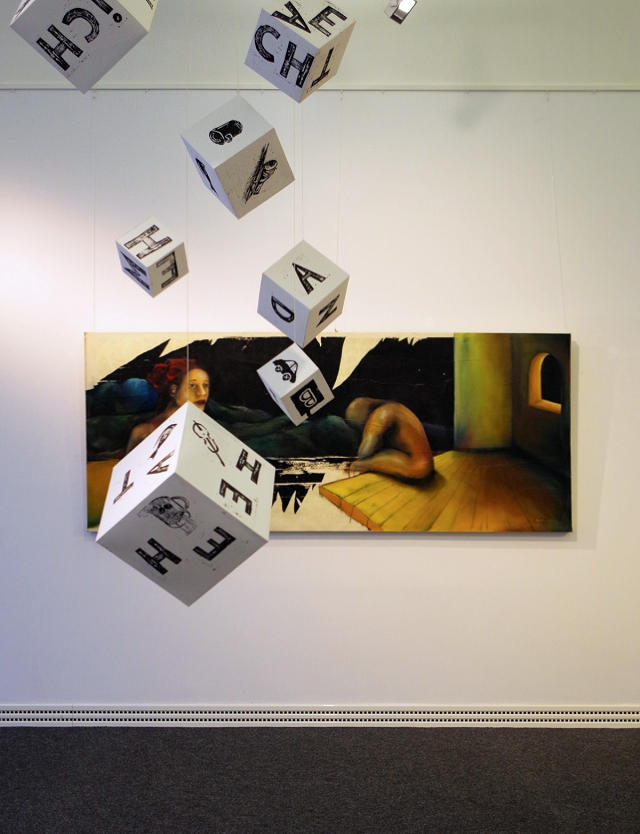
![]() custos
Why do you seek these opportunities? What drives you forward?
custos
Why do you seek these opportunities? What drives you forward?
![]() thomkinzel
Well, there are two reasons for this. The first is a very economic one: I make a living of my art. This means I need to present myself in exhibitions, galleries etc. in order to sell and earn money, which enables me to go on painting and printing. The other one is that I’m also keen on presenting my artworks. It is a huge difference between seeing a painting on the screen of a notebook and standing in front of the original work in an exhibition. Every time the artworks are installed it is also for me a moment of great surprise, because I see most of them for the first time hanging on the wall as part of an exhibition, too. This one moment when seeing for example a painting of mine as part of an exhibition fills me with endless satisfaction.
Not everything is planned well and there are some spontaneous moments, too. But most things in art business have to be reviewed carefully otherwise they would lack of quality, at least when organizing exhibitions.
thomkinzel
Well, there are two reasons for this. The first is a very economic one: I make a living of my art. This means I need to present myself in exhibitions, galleries etc. in order to sell and earn money, which enables me to go on painting and printing. The other one is that I’m also keen on presenting my artworks. It is a huge difference between seeing a painting on the screen of a notebook and standing in front of the original work in an exhibition. Every time the artworks are installed it is also for me a moment of great surprise, because I see most of them for the first time hanging on the wall as part of an exhibition, too. This one moment when seeing for example a painting of mine as part of an exhibition fills me with endless satisfaction.
Not everything is planned well and there are some spontaneous moments, too. But most things in art business have to be reviewed carefully otherwise they would lack of quality, at least when organizing exhibitions.
![]() custos
Many of your compositions seem to depict some vision, sometimes rather depressing ones. Is it really so? How are they being created in your mind?
custos
Many of your compositions seem to depict some vision, sometimes rather depressing ones. Is it really so? How are they being created in your mind?
![]() thomkinzel
No, it’s not always like this. For me the sceneries I depict are not always depressing, I’d prefer the term “melancholic”. “Depressing” has a negative connotation, whereas melancholic is, for me, connected with something very romantic. Especially my paintings have a strong connection with a theater stage, or a narrow room. The creatures and people I put into this place are locked in and have to perform the plot I have in my mind while painting. Very often the result and the first idea I had of a picture are absolutely different. During the process of painting / working on a print the concept develops, too. And I also do not have this dark mood while painting but I use it like a tool to create a very intense feeling between viewer and pictures.
The origin of my works can be a single word or a music song, a good book, or everything that influences me in my life. But, as I said earlier, this original thought doesn’t necessarily have to do anything with the finished artwork.
thomkinzel
No, it’s not always like this. For me the sceneries I depict are not always depressing, I’d prefer the term “melancholic”. “Depressing” has a negative connotation, whereas melancholic is, for me, connected with something very romantic. Especially my paintings have a strong connection with a theater stage, or a narrow room. The creatures and people I put into this place are locked in and have to perform the plot I have in my mind while painting. Very often the result and the first idea I had of a picture are absolutely different. During the process of painting / working on a print the concept develops, too. And I also do not have this dark mood while painting but I use it like a tool to create a very intense feeling between viewer and pictures.
The origin of my works can be a single word or a music song, a good book, or everything that influences me in my life. But, as I said earlier, this original thought doesn’t necessarily have to do anything with the finished artwork.
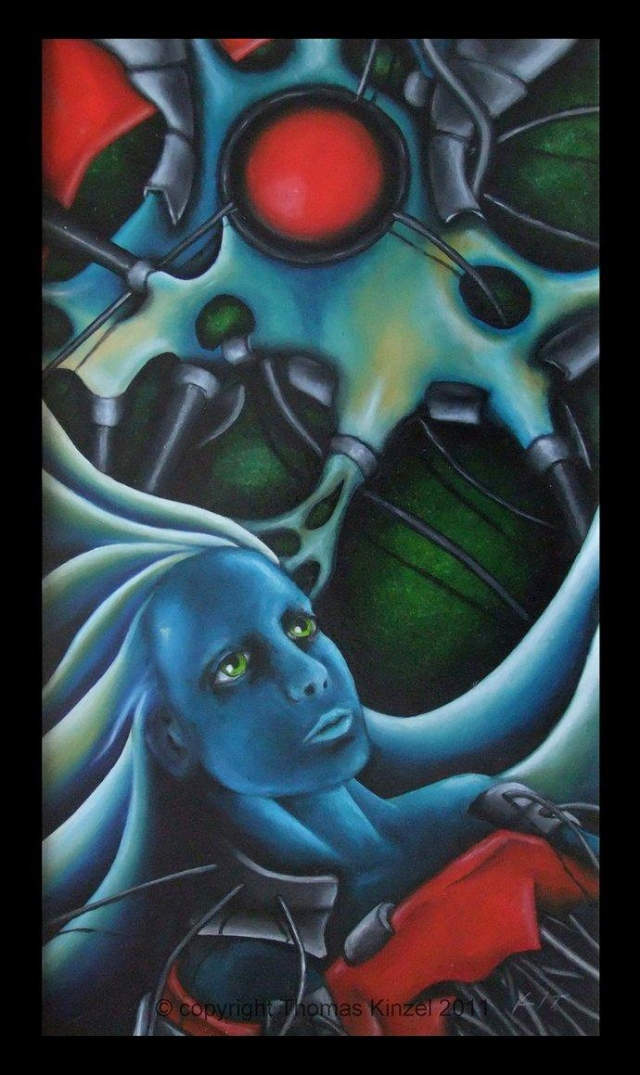
![]() custos
Some pieces reflect depressing experiences of childhood. Why?
custos
Some pieces reflect depressing experiences of childhood. Why?
![]() thomkinzel
Well, I think I know on which pieces you are referring to. For all those prints, paintings and drawings I used the same photo reference, an old childhood pic of myself – actually I did smile on the original photo. During the first drawing I did with this photo I recognized that the smiling face didn’t fit to the background and the overall appearance of the drawing. Therefore I changed it. From now on there was no smiling on this face anymore. Again it was more or less the idea of creating a melancholic vision. After the first drawing I stuck to the version of the changed photo.
thomkinzel
Well, I think I know on which pieces you are referring to. For all those prints, paintings and drawings I used the same photo reference, an old childhood pic of myself – actually I did smile on the original photo. During the first drawing I did with this photo I recognized that the smiling face didn’t fit to the background and the overall appearance of the drawing. Therefore I changed it. From now on there was no smiling on this face anymore. Again it was more or less the idea of creating a melancholic vision. After the first drawing I stuck to the version of the changed photo.
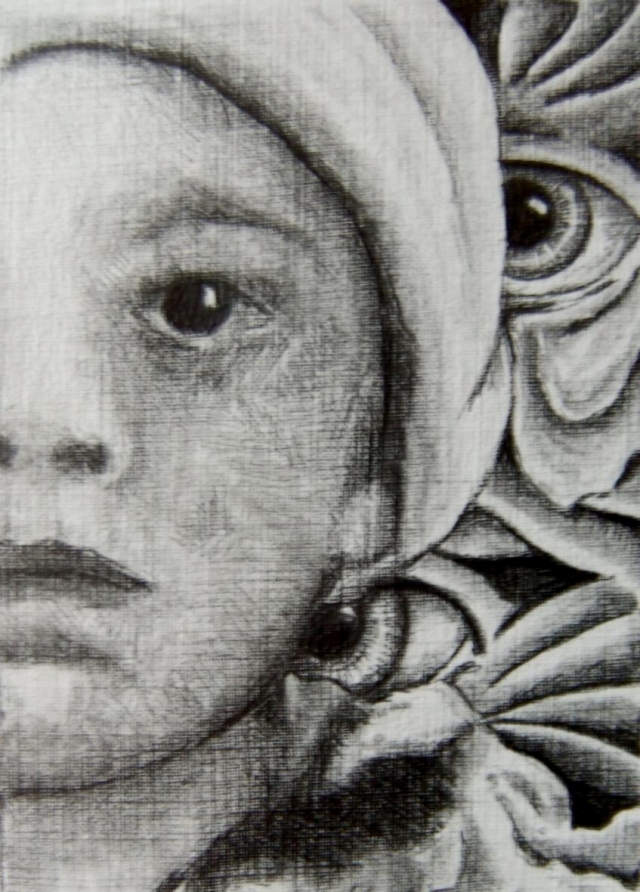
![]() custos
What is the “story” of the prints with topics concerning Eichstätt?
custos
What is the “story” of the prints with topics concerning Eichstätt?
![]() thomkinzel
In 2013 I took part at the La Calaca III. International Print Exchange by Carlos Barberena. The topic for this exchange was the Mexican holiday “Dia de los muertos”. During my research for the print I wanted to do for this exchange I found some information about a saint from traditional Mexican mythology which is strongly connected with Christian Mary, Mother of God. Following the print made for exchange I decided to do another one, with Eichstätt in the background.
Eichstätt is an absolutely catholic city. Therefore I wanted to bring these two opposites into one print. In the background on the left side of the print you can see Eichstätt, as it looks now, in the front you can see a Mater Dolorosa (Mother of Sorrows) with a stubborn. The right side shows a mirror inverted Eichstätt in the background; in the front you can see a “Mother of the Dead” with the same child. Both mothers are standing back on back (that’s why I also chose the title “Back on Back”), which also shall be a symbol for the strong connection with the pagan saint and the Christian one – although the Catholic Church is strictly against such a connection between a pagan and a Christian Saint.
thomkinzel
In 2013 I took part at the La Calaca III. International Print Exchange by Carlos Barberena. The topic for this exchange was the Mexican holiday “Dia de los muertos”. During my research for the print I wanted to do for this exchange I found some information about a saint from traditional Mexican mythology which is strongly connected with Christian Mary, Mother of God. Following the print made for exchange I decided to do another one, with Eichstätt in the background.
Eichstätt is an absolutely catholic city. Therefore I wanted to bring these two opposites into one print. In the background on the left side of the print you can see Eichstätt, as it looks now, in the front you can see a Mater Dolorosa (Mother of Sorrows) with a stubborn. The right side shows a mirror inverted Eichstätt in the background; in the front you can see a “Mother of the Dead” with the same child. Both mothers are standing back on back (that’s why I also chose the title “Back on Back”), which also shall be a symbol for the strong connection with the pagan saint and the Christian one – although the Catholic Church is strictly against such a connection between a pagan and a Christian Saint.
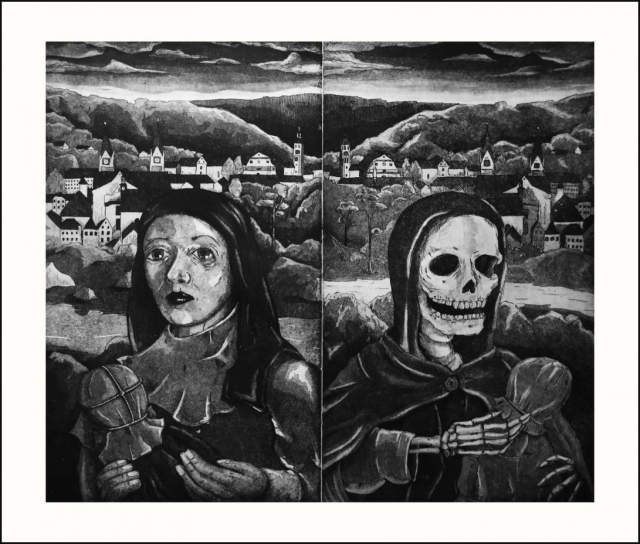
![]() custos
Lately you really seem to dive into the world of colours – is that special strong green a sort of sign which connects them?
custos
Lately you really seem to dive into the world of colours – is that special strong green a sort of sign which connects them?
![]() thomkinzel
Absolutely. I use this green as a symbol for something strong and wild and also a connection between all these new paintings. Additionally I would say that it’s a symbol for my personal revolution. In the newest paintings the green is supplemented by a strong orange. Thereby I want to create dynamic and contrasts. But it was a long way until I recognized how to use colors and paint like this. Most artists start with painting and then maybe switch to printmaking during their studies. I did it the other way round. I started with drawing and printing and then I did my first paintings. I never liked painting very much, until the last year. In 2009 a former student of Prof. Ernst Fuchs introduced me to the traditional mische-technique, which is a very graphic way of painting. Although I learned a lot through this way of painting it was just not the right way for me.
Since 2013 I think I found this right way I searched so long for. It’s a mixture of surrealism and abstraction and maybe some pop art influences, with bright and strong colours. At the moment I’m trying to find a way to bring these colours into my prints as well.
thomkinzel
Absolutely. I use this green as a symbol for something strong and wild and also a connection between all these new paintings. Additionally I would say that it’s a symbol for my personal revolution. In the newest paintings the green is supplemented by a strong orange. Thereby I want to create dynamic and contrasts. But it was a long way until I recognized how to use colors and paint like this. Most artists start with painting and then maybe switch to printmaking during their studies. I did it the other way round. I started with drawing and printing and then I did my first paintings. I never liked painting very much, until the last year. In 2009 a former student of Prof. Ernst Fuchs introduced me to the traditional mische-technique, which is a very graphic way of painting. Although I learned a lot through this way of painting it was just not the right way for me.
Since 2013 I think I found this right way I searched so long for. It’s a mixture of surrealism and abstraction and maybe some pop art influences, with bright and strong colours. At the moment I’m trying to find a way to bring these colours into my prints as well.

![]() custos
What do you like in FuturMaestri?
custos
What do you like in FuturMaestri?
![]() thomkinzel
First I just was interested what this group is like, as you invited me. In the meantime I got to like it a lot because it gives an insight into very contemporary artworks of young artists of different cultures. Of course it also is a great way for me to present my artworks. The advantage of FuturMaestri is that it is a closed network, where low quality can be kept out. I think this is a main problem of other, open art networks. They are full of low quality fan-art, which in most cases has no artistic quality at all. Another reason, maybe not only for using FuturMaestri but for art networks in general, is that unknown artists can be found on the internet. If one does not have his / her own website this is absolutely important. I was surprised of the high quality the artworks have here, although the artists are all quite young. Because of this low age you can also see a lot of changes and new experiments in the pictures. Another advantage of an art network, which is not aiming to sell works, is the contact one gets with other artists. Whereas in real galleries or selling networks, there often is a climate of concurrence among the artists, this seems to be not a problem at FuturMaestri.
thomkinzel
First I just was interested what this group is like, as you invited me. In the meantime I got to like it a lot because it gives an insight into very contemporary artworks of young artists of different cultures. Of course it also is a great way for me to present my artworks. The advantage of FuturMaestri is that it is a closed network, where low quality can be kept out. I think this is a main problem of other, open art networks. They are full of low quality fan-art, which in most cases has no artistic quality at all. Another reason, maybe not only for using FuturMaestri but for art networks in general, is that unknown artists can be found on the internet. If one does not have his / her own website this is absolutely important. I was surprised of the high quality the artworks have here, although the artists are all quite young. Because of this low age you can also see a lot of changes and new experiments in the pictures. Another advantage of an art network, which is not aiming to sell works, is the contact one gets with other artists. Whereas in real galleries or selling networks, there often is a climate of concurrence among the artists, this seems to be not a problem at FuturMaestri.
![]() custos
Which works or artists are important for you on the site?
custos
Which works or artists are important for you on the site?
![]() thomkinzel
I think the works of Rizal are the most important for me. His woodcuts are really great. He has a very strong picture language and is printmaker, like me. It is also fascinating to see how he works, how printmakers work in Indonesia. And of course one of his works is in my art collection and I’m proud about it.
thomkinzel
I think the works of Rizal are the most important for me. His woodcuts are really great. He has a very strong picture language and is printmaker, like me. It is also fascinating to see how he works, how printmakers work in Indonesia. And of course one of his works is in my art collection and I’m proud about it.
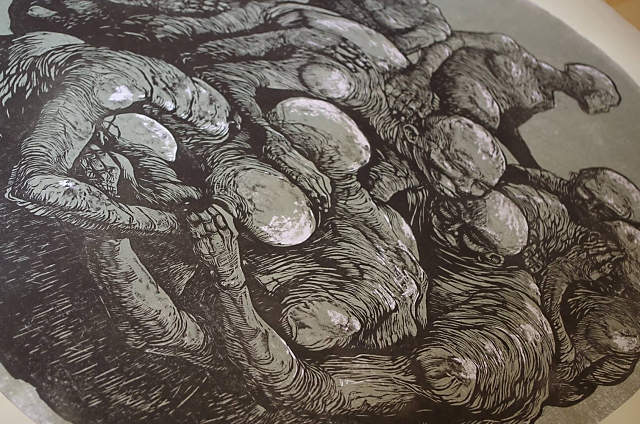
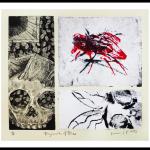
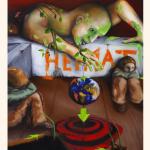
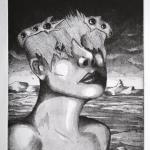
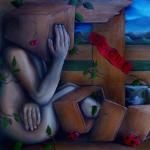

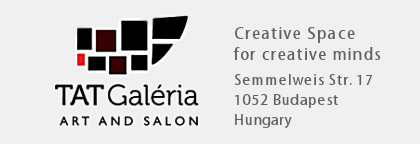
Comments
Rizal Pramana 2014-07-29 12:26:07
Really great to read your background Thom! And thanks for the mention.
thomkinzel 2014-07-29 12:54:38
Thanks and you're welcome Rizal. I'm still happy to own this huge print of yours!
Soimán 2014-07-30 12:44:15
What a great interview. Thank you, dear Judit, and congratulations, Thom!
Greens have real power to emphasize the drama, it evolves the story in a transcendental atmosphere, a sinister and macabre ambience. Colors make very intense your works. I'm also a huge fan of your grayscale works, they are very unique, full of expression and melancholy. Wonderful symbolic works, keep it up!
So endearing to see interactions between members of the community. Rizal is a great reference, that print is great piece, I'm glad for you, guys.
thomkinzel 2014-08-01 18:24:46
Thank you Regina for the kind words. The next prints are already in progress :)
Rizal Pramana 2014-08-01 18:58:28
Thank you Regina :) Am looking forward for your next prints Thom. Good luck!